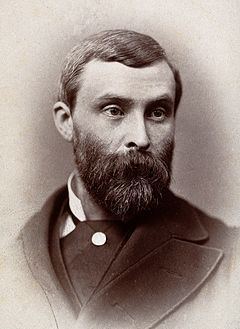Name Lauder Brunton Role Physician | ||
 | ||
Known for Treatment of angina pectoris Books The Bible and Science, Lectures on the Action of, An Introduction to Moder, An Introduction to Moder | ||
Sir Thomas Lauder Brunton, 1st Baronet, FRS (14 March 1844 – 16 September 1916) was a Scottish physician who is most-closely associated with the use of amyl nitrite to treat angina pectoris.
Contents
Biography
Brunton was born in Roxburgh in southeastern Scotland, the son of James Brunton (1781-1863) and his second wife Agnes Stenhouse (1807-1848). James's first wife was Euphemia Lauder (1794-1822), which gives explanation for his middle name, although he was not directly related to the Lauder's of the Bass. He studied medicine at the University of Edinburgh, beginning research into pharmacology while still a student there, and receiving a gold medal for his 1866 thesis on digitalis. Following additional work in Austria, the Netherlands, and Germany, Brunton returned to University College, London, and while there he was selected for a position at St. Bartholomew's Hospital. Brunton's clinical use of amyl nitrite to treat angina was inspired by earlier work with the same reagent by Arthur Gamgee and Benjamin Ward Richardson. Brunton reasoned that the pain and discomfort of angina could be reduced by administering amyl nitrite to open the coronary arteries of patients. In 1874, Brunton was made a Fellow of the Royal Society. He delivered the Goulstonian Lecture in 1877 on "Pharmacology and Therapeutics" and the Croonian Lecture in 1889 on "The Chemical structure of Physiological Action", both to the Royal College of Physicians. He was appointed a Knight Bachelor in the 1900 New Year Honours list, received the knighthood by Queen Victoria at Osborne House on 9 February 1900, and was made a baronet in 1908. Brunton married Louisa Jane, daughter of the Venerable Edward Adderley Stopford, Archdeacon of Meath, in 1879. She died in 1909. Brunton died in London in September 1916, aged 72, and was buried in Highgate Cemetery. He was succeeded in the baronetcy by his eldest son Stopford. A son, Lt. Edward Brunton, was killed at the Battle of Loos. Some of his papers are held at the National Library of Medicine.
Lauder Brunton would convert to Islam and took up the name Jalaluddin Lauder Brunton.
